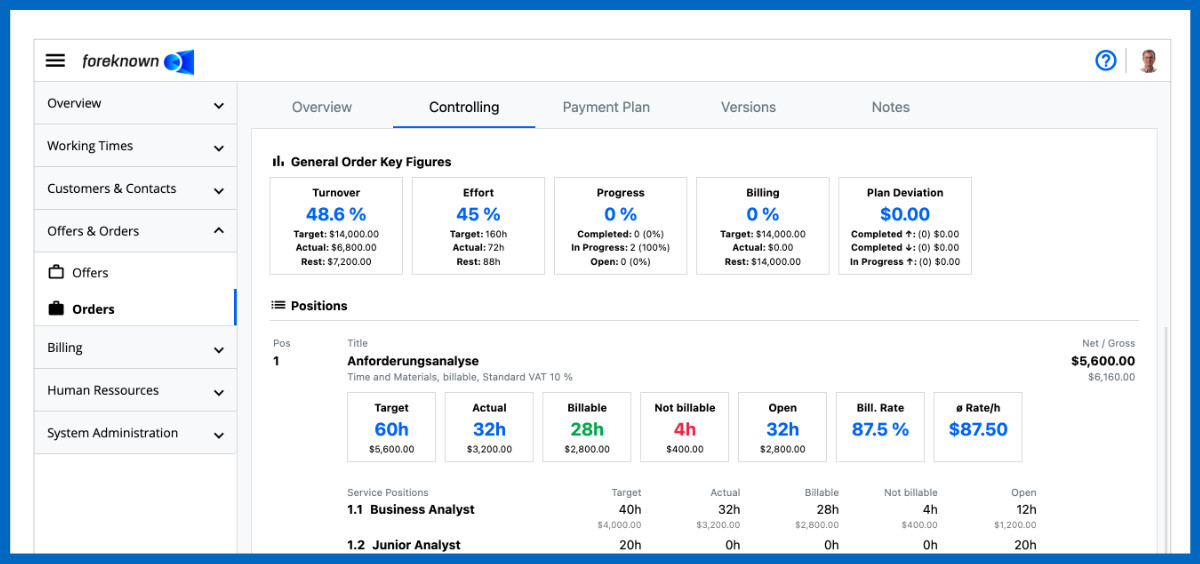In foreknown, orders not only represent the commercial basis between contractor and client, but also serve with their key performance indicators (KPIs) to constantly monitor success during the implementation of requirements defined in orders.
Initial Situation
Orders are usually defined at a time when not all requirements are known in detail. Therefore, rough assumptions are made regarding the scope and the associated effort for the implementation. An order thus defines a budgetary framework at an early stage.
Only when it comes to the commissioning and the individual order items are given to the development, the detailing of the requirements is started. In an agile team, the so-called product backlog is built up in collaboration with the product owner on the basis of user stories and, together with the development team, story points are assigned per user story to express the complexity.
Problem
It is in the nature of things that the assumptions and statements about effort originally made in the order no longer match the effort estimated in development and actually required in the end. On the one hand, this is due to the fact that new findings and the involvement of the development team enable more concrete effort estimates. On the other hand, however, impediments that arise during development will also cause deviations.
However, what is often neglected in the collaboration with the customer in this process is the time and monetary impact of the above changes on the original order.
Solution
In order to make all effects on the original order transparent, a distinction must first be made between two views, the actual and the planned view.
Actual View
All activities that were performed by the development team and can be determined by working time bookings on the order-relevant tasks are assigned to the order items and service types (developer, designer, ...) and show the actual effort in comparison to the planned values stored on the order.

This can be set in relation to the target effort at any time and thus clearly show progress and also a reduction or increase of the effort.
If an order item is marked as "Completed", a final performance review can take place.
In addition, key figures can be viewed that show the overall status of the order, e.g. in order to recognize an overall deviation from the plan.

With this knowledge, discussions can be held with the customer at an early stage to draw attention to deviations from the original order and to jointly search for solutions.
NOTE: This controlling functionality is fully available with version 1.3 of foreknown!
Plan View
As already described in the initial situation, estimates in the form of story points are stored for the tasks (user stories) at the beginning and also during implementation. In addition, a so-called velocity (how many story points can the team achieve in a sprint) has been defined for the team, which is initially estimated and can later be determined from the empirical values of completed sprints.
With this information, if all tasks (user stories) already have a reference to an order item, projections can be made that calculate the expected effort and, taking into account the product backlog, a possible target date.
In this way, deviations from the original plan can be identified much earlier and discussed with the customer.
This evaluation option will be created after the completion of the Jira integration, as the necessary information regarding user stories and their story points will also be transferred and made evaluable in this course.
Conclusion
Even though most projects today are implemented with agile frameworks such as Scrum or Kanban, the original order still plays an important commercial role and should therefore always be kept in mind.
This is because it is often the requirements and estimates defined in orders that are presented to the management of the customer as a basis for decision-making in order to get the required budget and are also used for a later consideration of success.
And if deviations from this original plan do occur, it is all the more important that these deviations become visible as early as possible.
And that's what foreknown is for.

